I was recently involved in a camera club discussion where the topic was “What is Street Photography?” The ensuing discussion was emotional, informative and at times contradictory.
A few of those present became emotional, and visibly aggressive, as they themselves had been photographed ‘without their consent’ in public places or at public events.
This sort of response, while uncomfortable for some, was perfect for getting the discussion going and indeed exactly what is felt out in the field when doing street photography – that is to say it can become uncomfortable.
Naturally the topics covered were wide-ranging – from the legal and ethical standpoint; what camera and lens to use to what constitutes ‘street photography’ – the crux of the debate.
Let’s cover a few of these subjects here and, like our camera club’s debate, remember these are my interpretations and opinions (although I shall try to be unbiased), and that your thoughts may differ.
Contents
Street Photography Laws ... Is it legal to photograph people in public?
Bear in mind that the great debate on ‘What is Street Photography’ took place in New Zealand, a sleepy, but liberal little village, out on a limb somewhere near the bottom of the world.
For the purpose of this article I am assuming that the question relates to taking photos of people – whereas street photography does not, by definition, need to have humans as subjects.
I’d like to add that I believe street photography plays an important role in providing a time line of our existence here on this earth. There are many great street photographers who have helped us understand much about ourselves and our forefathers – it is our duty to continue the tradition.
The law here is that it is legal to take photos of people in a public place with a few expectations. The exceptions we all agreed were pretty obvious. For example, it is illegal, and quite frankly wrong, to take photos of people who are in a public place where they can expect privacy – sticking your lens through a window of a public change room is clearly NOT acceptable, nor is it acceptable to go shoving a camera in someone’s face – even though it might be perfectly legal.
That’s little old New Zealand (LONZ) but what about other countries?
One of the joys of traveling is the taking of photos in places of interest and of the people of other nations and cultures – are the laws there the same as LONZ? Probably not so be sure to brush up on what is legal and what is not in the country or city you are visiting. For example certain government buildings are strictly off limits (I’m thinking North Korea here – or maybe I have just read too many John le Carre novels) and taking photos of them can land you in deep water. A night in jail, a huge fine, your gear confiscated, a criminal record and possible deportation is not how you want to remember your holiday.
I have been confronted by a security guard in a shopping mall while simply sitting having coffee waiting for a friend to arrive – I wasn’t even taking photos. The security guard assumed my intention was to take photos of something, what that something was I have no idea. I would have thought a shopping mall is a pretty public place, but apparently the owners were a Maori Trust of some sort and I supposedly needed permission to take photos, if that was my intention. I was the only person challenged because I had a ‘professional’ camera while everyone else around me was taking photos with their camera. The security guard left soon after I pointed this out to her.
Brush up on the street photography law for each country and city you visit (and mall?).
While you may be within the bounds of the law, some people couldn’t give a toss and will get physically aggressive. A blood nose or damaged camera is not an outcome you want.
Street Photography Etiquette - Be kind and respect others
While laws apply to the legal side of things there is a line somewhere in the sand that you shouldn’t cross. It’s a wobbly line and in most cases it is entirely up to you, the photographer to decide what you are comfortable with.
For example taking photos of people less fortunate than ourselves, for example the homeless, disabled or poor, while being of interest might be considered in bad taste and may well make the subject feel uncomfortable. My personal feelings are that if asked not to take photos or delete a photo I will generally do so.
On the other hand if I am told to do so and I am within my rights I will discuss the issue and particularly the manner of the demand with the person. The outcome of which will determine what I do. I try to avoid confrontation but sometimes you get the odd bully who huffs and puffs for no apparent reason.
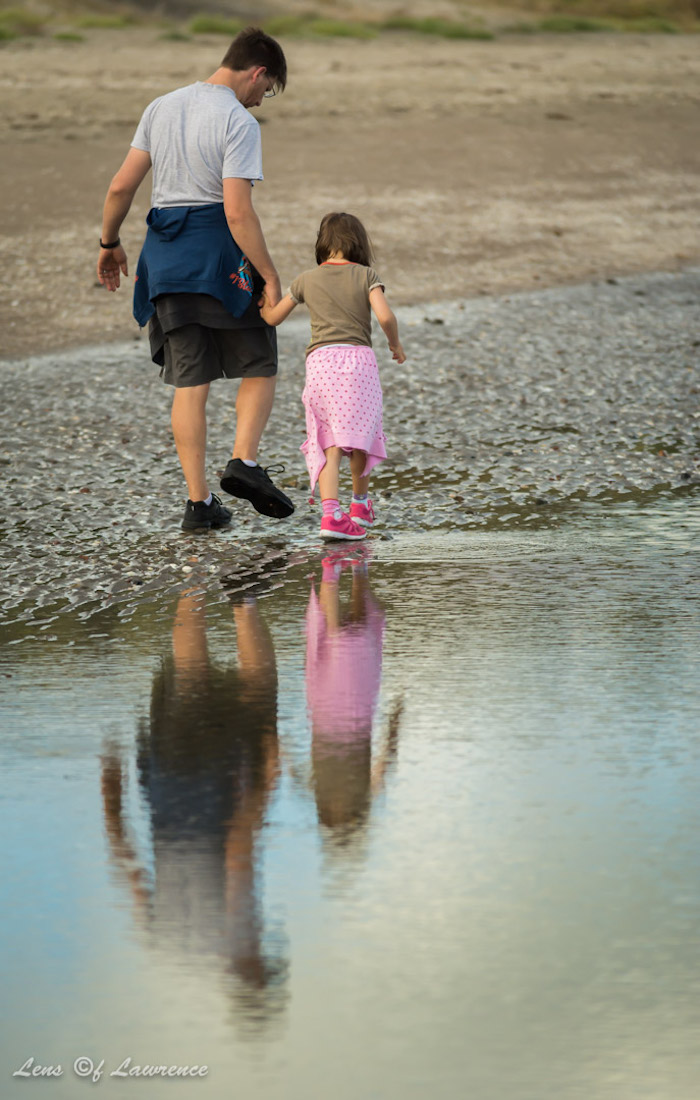
The following story is one such example of ‘official bullying’.
I was in the quaint little town of Coromandel one late afternoon and came across a group of 3 or 4 kids playing basketball with an adult who happened to be a policeman. I was out trying to photograph birds in flight and spotted this group.
There weren’t many birds around so I switched to the basketball to get some action shots.
It wasn’t long before PC Plod ambled over to me and told me to ‘cease and desist’ and to delete the photos I had taken ‘as it was in breach of the Privacy Act’.
My hackles rose at the man’s arrogance and clear bullying tactics.
Ignoring him totally for a few seconds I first of all wrote down his police vehicles registration number and then his name, all while he stood there with his charges watching.
I then told him in no uncertain terms that as an officer-of-the-law he should be aware of the laws and that I would not comply with his demand simply because he was a policeman!
I told him that had he approached me and said something like “Hey mate, would you mind not taking photos of us? You probably don’t have any bad intentions but we’re a bit uncomfortable with it” I would have happily agreed and deleted the photos.
Before leaving I wrote down my name, address, car registration and gave him my business card with a “These are my details should you wish to arrest me, get a search warrant or need to investigate me!”
I did not delete the photos (evidence after all) but also did not use them for anything, they were after all just practice for action shots.
The whole incident had spoiled my afternoon as I am sure it had theirs – so there are ways to handle things from both the subjects point of view and ours.
I probably should have been the bigger man and replied “Certainly Officer” and deleted the photos straight away.
That would have left him looking like the hero he clearly wanted to be and the afternoon would not have ended the way it did.
Lesson learnt – be kind to people and take the high road, it is so much easier.
Street Photography Tips - getting comfortable with uncomfortable.
Learning Street Photography.
For much of your street photography you will probably be taking candid shots of people, this could be individuals, groups of people interacting or a public event.
This can be unsettling for you and your subjects.
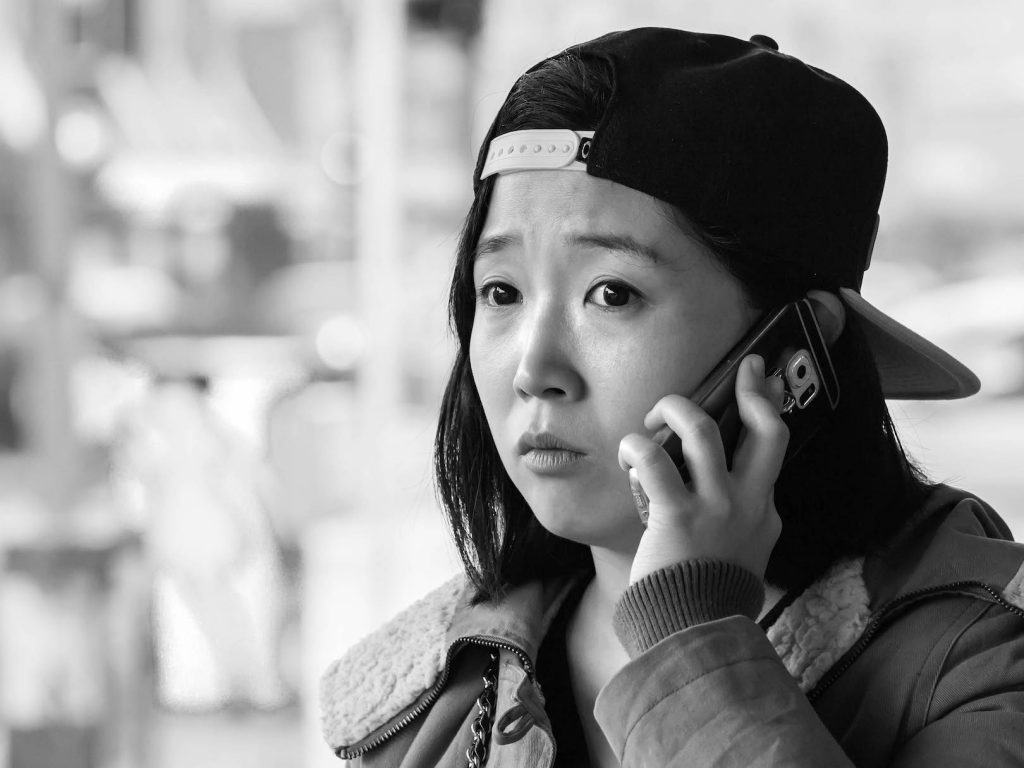
Getting comfortable with your camera and the reactions of your subject is the first stumbling block to overcome but before you do:
- Decide what it is you want to achieve. This could be individual portraits of people (candid or otherwise), generals street scenes, interesting moments etc.
- What camera and lens should you be using. From experience a DSLR is a pretty big and obvious body to be carried around and for some reason the public has the perception that it is a ‘professional’ camera and are more wary of them. If you have nothing but a DSLR that is fine (its what I use) but consider starting with a smaller mirrorless or point and shoot camera. For a lens I would suggest you start with something fairly versatile such as a zoom lens ranging from about 18-300mm – the downside being that you will be restricted with your aperture options, particularly at the long end of the focal distance. Once you have decided exactly what type of street photography you enjoy you can switch to a specific lens, such as a prime lens.
- Learn to be bold and act with confidence. The more you behave as if you are doing ‘nothing wrong’ (which you aren’t) the more you will be accepted by the subjects.
- I often approach people and let them know what I am doing and ask their permission to photograph them. I also offer to send them copies if they would like. I will only ever ask people if I thing a series of photos would produce the best results. To achieve this I need them to ignore the camera while I fire away. It could take as long as an hour of chatting and snapping until my presence is no longer even noticed but the results are often worth it and I always land up with a new bunch of friends.
- Ask them to do something but don’t give them any direction. Their interpretation of an instruction is often diametrically different to yours, this is especially so with young children, and can make for interesting photos.
- Get bold and engage with your subjects. If doing portraits, like I do, get in as close as you comfortably can. I find taking a photo from a distance and then taking a step closer for a series of photos usually get’s the job done. Seems the more uncomfortable I become, and the more the subjects becomes aware of me, the better the photos are.
- Set-up for an ‘ambush’ for that decisive moment. If you see a particularly interesting spot or potential scene it is easy enough to set up your camera and wait for the event to happen. This could be anything interesting – a person stepping over a puddle or using two moving people to frame a stationery subject. Ashok Kochhar (a personal friend and himself a very photogenic subject) is a master at this sort of photography (in my opinion) and he has an uncanny knack of creating interesting and provocative photos out of seemingly normal (and some abnormal) scenes. I love his photos of India in particular.
- Change your perspective – shoot from unusual angles (low is almost always interesting), take a step or two either side to change the point of view.
- Include or exclude specific backgrounds. Different backgrounds can tell a totally different story.
Street Photography Technique
Street photography is much like other photography – you basically have to develop a technique that suits your style.
Your stage is continually changing and you need to have an eye for anticipation.
Be prepared as the scene and subjects are constantly changing, because of this my preferred shooting mode is Manual with ISO set to auto.
Most of my photography friends prefer to shoot in aperture.
Use whatever mode you are most comfortable with.
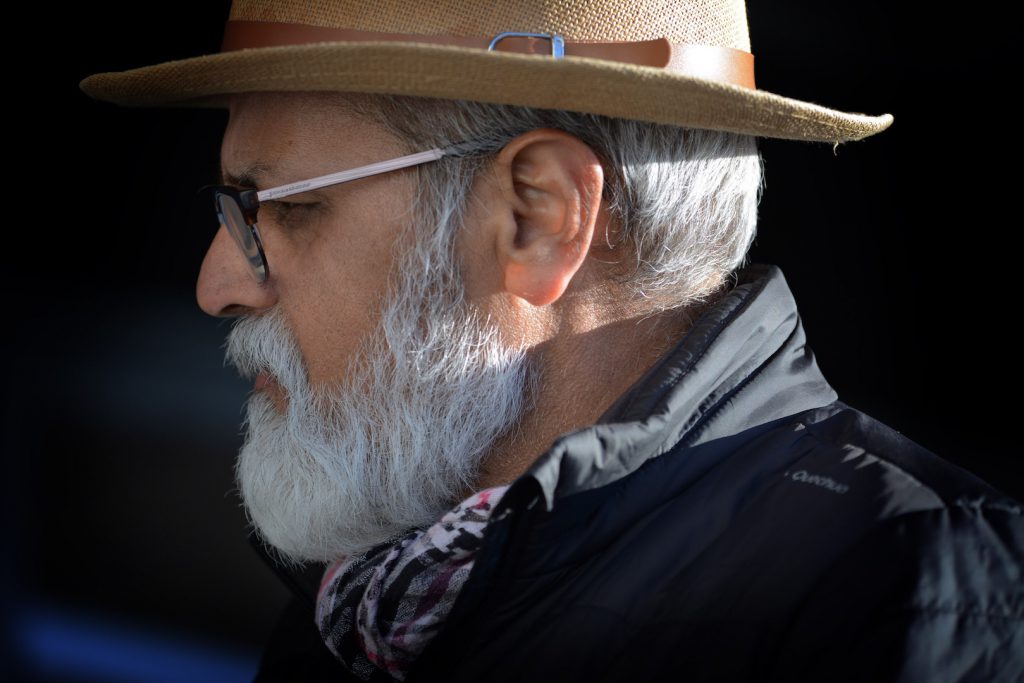
- The two important aspects for me are shutter speed – do I want to freeze the action or have some movement in it?
It is a matter of personal taste and the subject will dictate the required settings. - What aperture should I be using, how much of the scene do I want in focus?
Does the background detail matter or will it look better blurred and merely as a suggestion?
Once that is decided you need to get yourself into position and take action!
Find a technique that you’re comfortable with.
- Shooting from the hip is a popular technique and takes some practice – the use of a tilt screen camera is very handy in these situations.
- Use a tripod and remote control release. This I have found to be very effective and so blatant that it is almost unobtrusive. A camera on a tripod with the photographer a few feet away poses no threat. Simple focus on the point you want to focus on and then step away until a subject gets to that point. You can click away and no-one is any the wiser. Just be careful not to put your tripod and camera in the path of other people, besides running the risk of it being knocked over you are probably being a nuisance!
- Have a coffee. My friend Ashok often sits in a coffee shop and shoots through the windows at passing scenes. His images can exclude or include the sign writing on the window to show the perspective from his view. Another favorite of his is to place his camera on the table-top and focus on people within the coffee shop itself. For this he uses his tilt screen and clandestinely snaps away at oblivious subjects.
- Be blatantly aggressive and bold. I love this approach. The trick here is to not make eye contact with the subject. Simply bring your camera up, focus, compose, shoot and continue to walk away! Simple and effective – try it.
- Undertake a street photography project. Being focused on capturing a certain subject, style, lighting condition, scenes etc. is a great way to develop your technique. It gives you something to concentrate on while ignoring the distractions and fears that could otherwise be a distraction. Examples of projects could be photographing only people in or from within coffee shops (thanks Ashok), people crossing a particular intersection (think tripod), shooting from the hip or taking photos of people’s feet from various angles – the options are limitless.
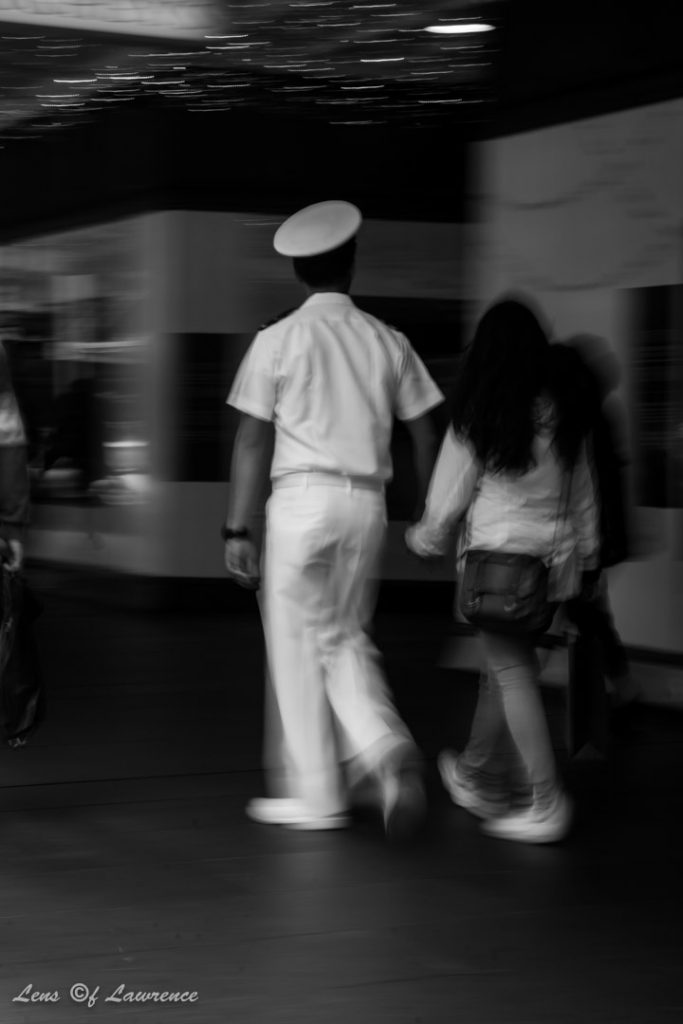
Learning Street Photography ... resources abound
The Internet is full of ideas and “how-to” tutorials, all basically saying the same thing – that at the end of the day you have to get out there and DO IT!.
For me the best resources are places like:
- YouTube
- Photographic forums
- Facebook Street Photography pages
- Books , books, books and more books! I love having info to hand to refer to and I always read the last thing at night before switching the lights off.
- Study the works of iconic street photographers. There’s bound to be something in their work that appeals to you and that you may decide to take on as a style. Don’t copy but develop your own authentic style.
Hit The Street.
There’s no replacement for action. Hit the street and get comfortable.
Go out on the street without a camera and ‘see’ the opportunities, imagine how you would compose them if you had a camera. You’ll soon realize the unlimited potential and fun you can have with street photography.
The more you practice the easier it becomes!
Let me know your thoughts in the comments section below.
I enjoy hearing from you and seeing your photos
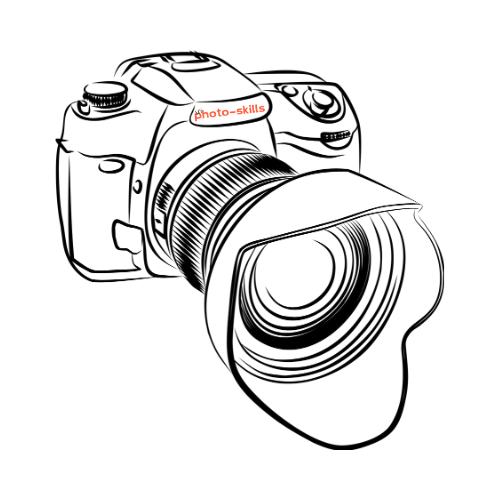
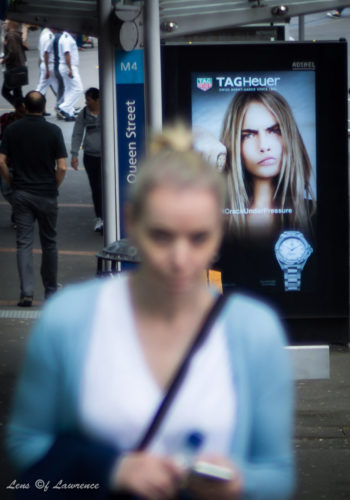
Lawrence, great article. I have traveled a lot and love recording places via my camera. To me, I am an earth photographer. Sometimes people are in my photos and sometimes not. Sometimes it’s in cities and sometimes not buildings can be seen.
I watch so many who find a fantastic scene and then just have to find someone to put in it. Not me. If a person or people add to a scene fine. If not, things don’t look natural in the end photo.
I like to take odd photos. I once saw a street garbage bin with a wildlife promo poster on it. It said ‘come and see the loins (sic), tigers and bears. Boy was I excited. All those loins to see!
You have put some great information here, especially the education.
I lived in NZ for a year. My friends parents lived in Rotorua. Once when we visited we went to the local Marae. The information said no photos inside the Marae. I think we were the only ones who respected that.
Also I was extremely lucky to be in NZ when the Marae at Ngaruawahia, then the queen’s area, was open to the public. I don’t use the word awesome liberally (and most often used incorrectly) but that Marae was awesome. And we didn’t take photos there either.
People need to be respectful not obnoxious.
Thanks for such an interesting article.
Ciao
Helen
Hi Helen.
How wonderful that you have been here and seen the place. I live in Hamilton for about 5 years so am very familiar with Ngaruawahia and it is amazing that you went to that particular Marae.
I fully understand what you mean about taking photos of obscure objects – they can be very interesting indeed. I do the same all the time – usually when I am testing my settings and trying out composition – with digital cameras it doesn’t cost anything to do that sort of thing.
Thanks fro popping by and posting your comments – I really appreciate it.
All the best,
Lawrence
Very informative post as I had thought there was more in the privacy legislation to protect people’s privacy in regards to photographs. I knew that in a public place that there is always the chance I will end up in the background of a tourists innocent snapshots of their holiday or people taking a photo of their friends. I always understood that photographers taking photos of people in a public space would need permission. I must admit that I am very uncomfortable with the fact that it is not against privacy legislation for photographers to purposely sit and take photos of people going about their business. I actually went and looked at my state’s law in regards to this. It would appear that your information is correct and the laws here are similar. It is not okay if a photograph is taken for lewd purposes but it is perfectly okay to take photos of people without their permission. Unless it is for commercial gain and then permission needs to be sought. I am very uncomfortable with this.
Hi Megan.
You’re not the only one that feels uncomfortable with photos being taken but the truth of the matter is 99.99999999% of the time the photographer is innocent of any devious scheme so you needn’t worry. However there is that small % of photographers that are lewd and unethical and spoil it for the rest of us.
I think photos of people in public are so important to document our timeline – don’t you love looking at books and magazines that show your city/town and its inhabitants 40 or 50 years ago. Everything about them, fashion, transport, building etc is fascinating. As photographers we need to document these things for future generations.
So tell me what is it you are uncomfortable with if you are say walking down the street window shopping or having a coffee in a sidewalk cafe?
I have no doubt the laws will change in the future but for now street photography is alive and well – and, I might add, thriving.
Thanks once again for your comments.
Stay safe out there.
Lawrence